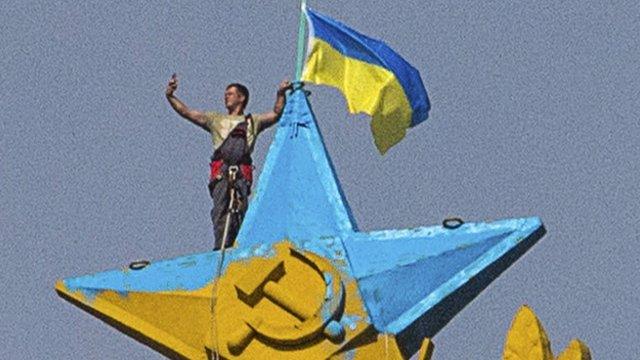The daredevils feeding a dangerous Russian craze
- Published
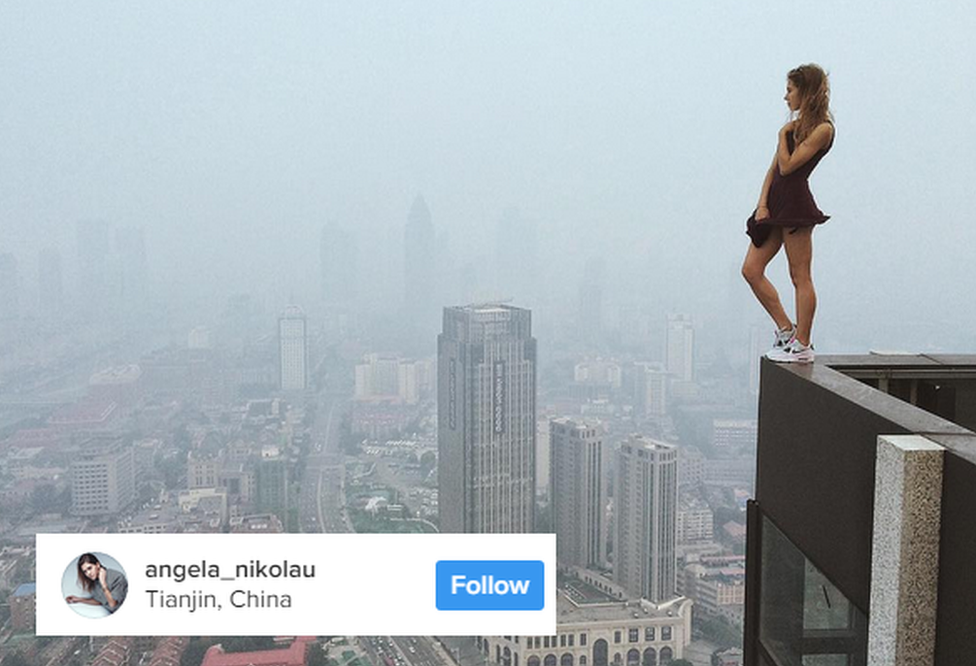
A number of young Russians are making names for themselves by posting videos of life-threatening stunts online. What drives these extreme selfie daredevils?
He's got a camera strapped to his head and he teeters on the edge of the roof in a nine-storey apartment block in Siberia.
"Are you filming?" he asks, as a friend hands him a flaming torch. Orange flames engulf his legs and suddenly he jumps, somersaulting in the air like a stricken warplane before landing with a thud into a deep pile of snow.
Remarkably, he's unhurt - if a little winded. Police tell a gaggle of onlookers to stop filming, but within hours, footage of this potentially deadly jump goes viral - various videos of the stunt filmed from different angles were watched millions of times on YouTube.
Many people were incredulous, even angry. "Is this the stupidest stunt ever?" screamed one headline.
The young man's appetite for risk is unusual but not unique. In fact a growing number of deaths and injuries, suffered by Russians who among other things have fallen from buildings and moving trains whilst taking pictures, have prompted the Russian Interior Ministry to launch a "safe selfie" campaign.
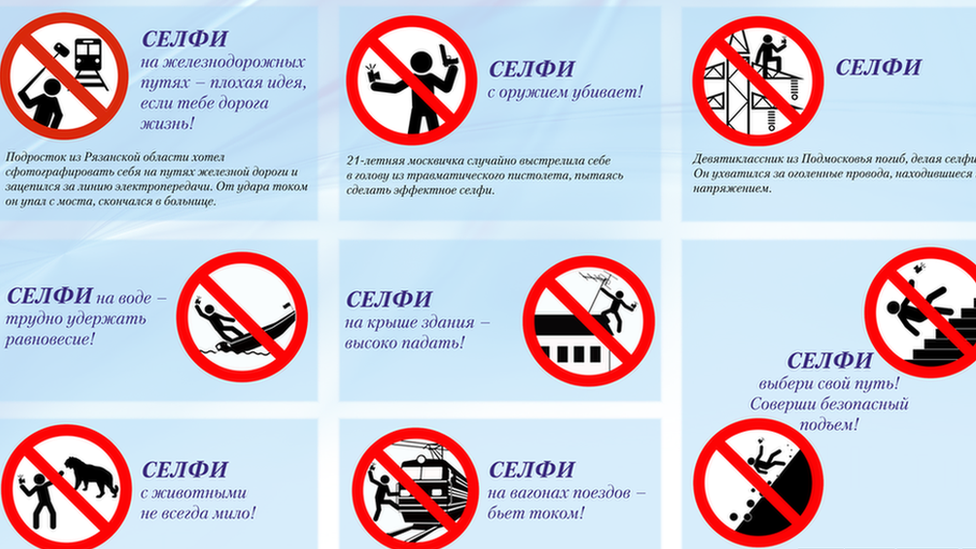
The Russian Ministry's safe selfie campaign urges people to, for instance, avoid train tracks and roofs, and be cautious around staircases, wild animals and guns
Despite the deadly peril, some of the risk takers are attracted by fame and the possibility of becoming social media stars. In many places in Russia, tall buildings are accessible and fines for trespassing are low, if they exist at all. And one enthusiastic participant says extreme stunts can alleviate the boredom and pent up energy of many Russian men.
But what really drives some of the most notable Russian selfie daredevils?
Alexander Chernikov
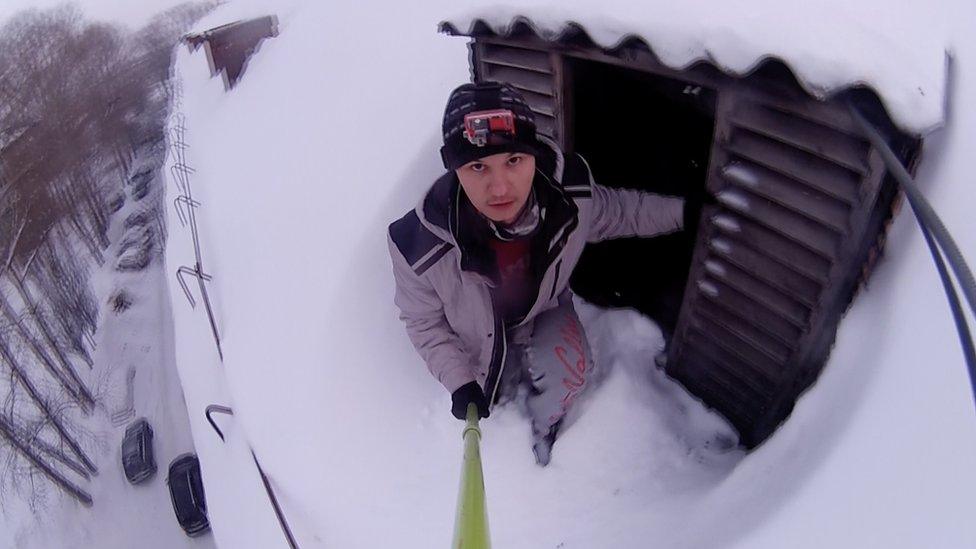
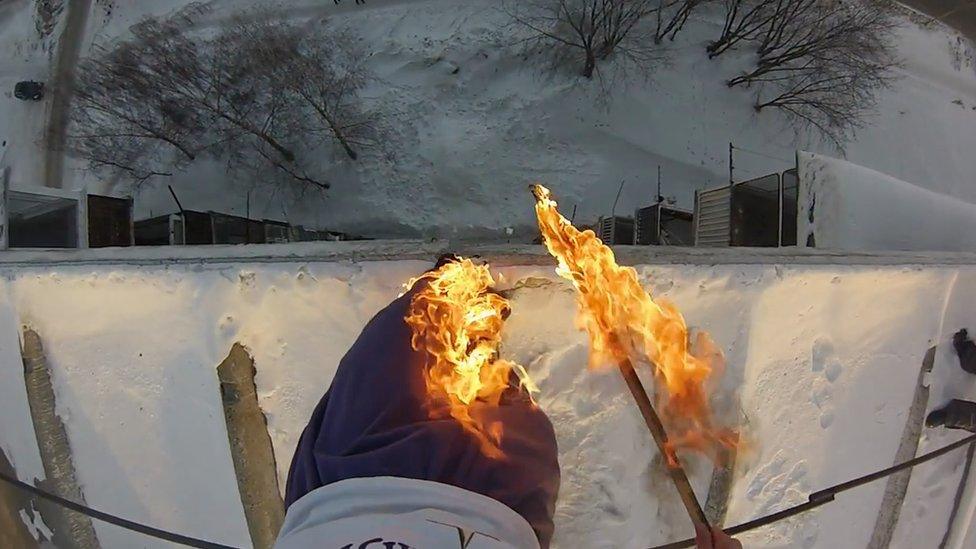
Alexander Chernikov lit his trousers on fire before jumping into a snowbank. Video of the dangerous stunt went viral online
The man jumping off of that Siberian apartment block, 23-year-old Alexander Chernikov, lives on the outskirts of Barnaul - 4,000km east of Moscow.
Even though it's -18C and thick ice cakes the pavements, he's dressed in a shiny burgundy bomber jacket, jeans and cowboy boots. The place where he made his infamous jump is a dreary, Soviet-era building with rusty balconies covered in satellite dishes.
"Up there you feel that you're standing on the line between life and death - your life is hanging by a thread - that if something goes wrong you may die," he says.
Alexander claims he is not afraid of death. "What's the point of being scared? It's inescapable. It comes to us all," he says.
But would he go to such lengths if there were no cameras? "Probably not," he admits. "I would find a different way to get on in life."
Alexander sometimes gets temporary work as a labourer on building sites - there are also local jobs in factories or unloading cargo trains. But he dreams of a career as a stunt man or even a film star. He's desperate to get out of the sleepy village where he still lives with his parents.
Soon after Alexander's notorious jump, which has been viewed more than 10 million times online, he was invited onto a TV show in Moscow where a film director promised him a screen test. But on the show, he and his family were treated like country bumpkins.
"What if he jumps again and gets injured?" asked the show's host. "I don't want him being treated in hospital on my taxes - I don't want to pay for this idiot!"
He's still waiting for the screen test.
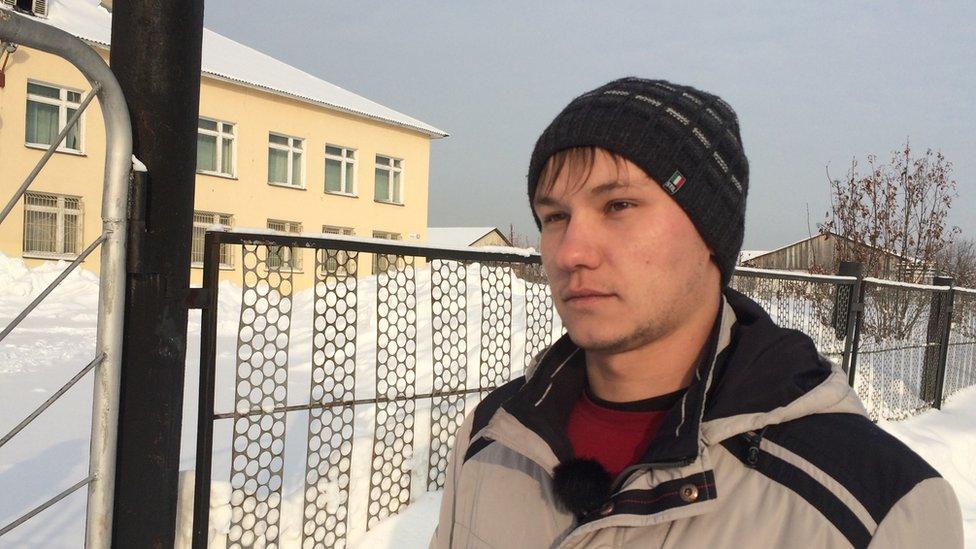
Alexander Chernikov is still looking for his big break

Russia's extreme selfie daredevils
Hear Lucy Ash's encounters with the risk-takers on Crossing Continents on BBC Radio 4.

Vladimir Lapik and Sasha Bitkov
In a non-descript office block north of St Petersburg, two young men are teaching children and teenagers in a hall covered with red and black images of Asian warriors. It is a club devoted to parkour - a form of acrobatics in which people run, climb and somersault over a city's ready-made urban assault course of walls, stairs, and rooftops.
Vladimir Lapik and Sasha Bitkov were friends of Pavel Kashin, one of the best known parkour artists in the city who died while filming a stunt on a rooftop. Standing on a metre-wide ledge at the top of an apartment block, Pavel attempted a back-flip - but lost his footing on the landing, and fell sixteen floors to his death.
It was a standard manoeuvre, according to his friends, and one that he had performed dozens of times before. "We don't know what happened," says Vladimir, "maybe he was distracted for some reason."
He adds that he knows five people who have died falling from buildings or getting crushed on railways while performing stunts, but this has failed to put him off parkour.
"We are famous online because we have a lot of committed people here, who practice hard to be the best," he says.
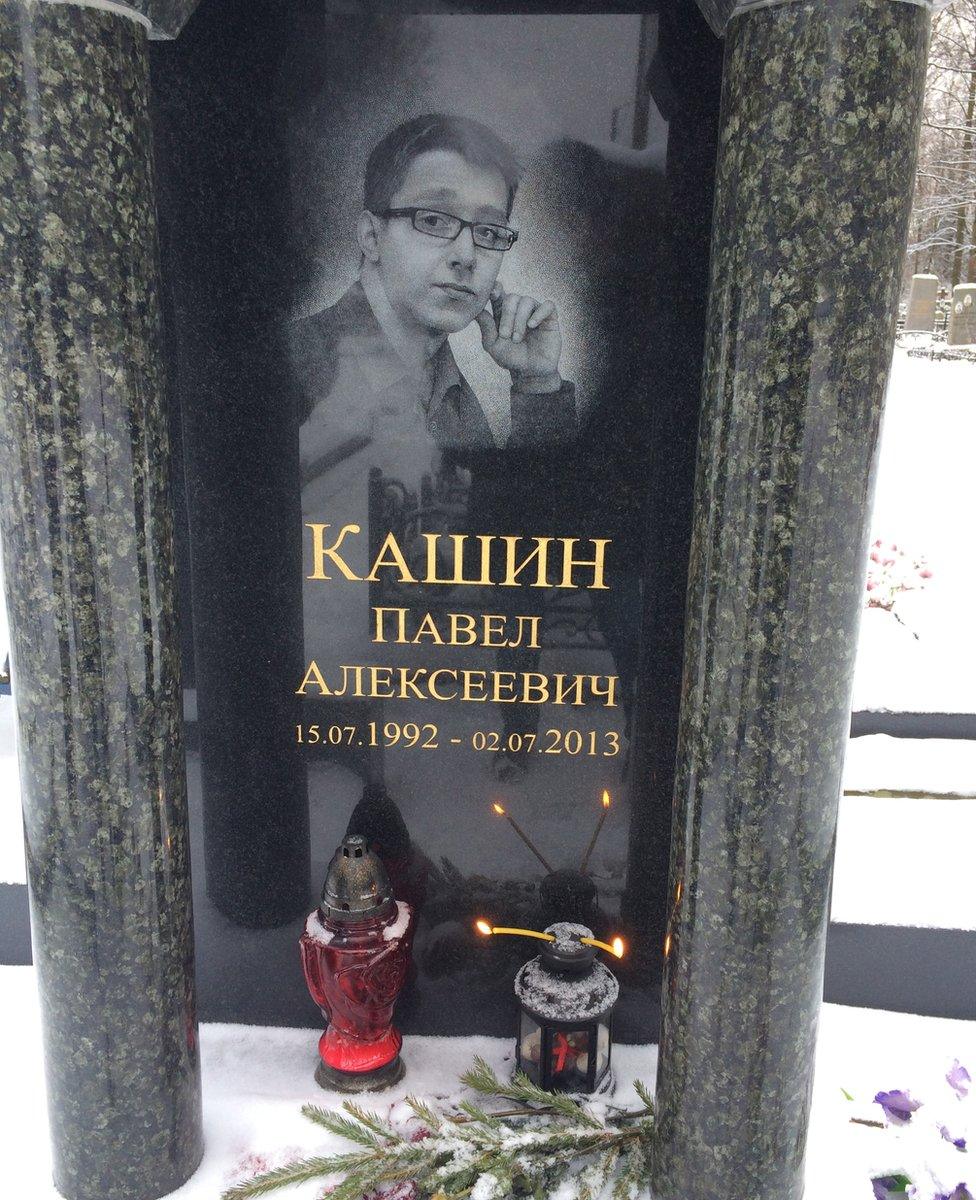
Pavel Kashin's grave in St Petersburg
Kirill Vselensky
24-year-old Kirill Vselensky is one of Moscow's most famous "roofers" or high-rise adventurers and he has climbed almost every tall building in the city - except, perhaps understandably, the Kremlin and the Foreign Ministry.
He acknowledges that aside from the obvious danger of death or serious injury, roofers are also breaking the law - but the punishments are mild. The fines are small, although they have recently increased for people caught climbing on top of trains.
"In America, Canada and Europe the guys have to wear masks or climb at night because the property and trespassing laws are so strict," he says. Once, while climbing the Pyramid of Giza in Egypt, he was nearly lynched and had to empty his wallet to escape.
In Russia, he says, authorities are prepared to look the other way, as long as roofers keep out of politics. Some opposition activists have asked Kirill to hang banners for them across high rise buildings but he always refuses.
In the summer of 2014, a Ukrainian friend of his climbed a landmark building and poured blue paint on the yellow star on top - creating the colours of his country's flag. But while the friend hightailed it back to Kiev, police raided Kirill's flat instead and the young Muscovite wound up in prison for 17 months.
But that didn't dissuade Kirill from further urban exploration. At the top of a Stalin era skyscraper near the American Embassy, Kirill came across a secret floor.
"The lift doesn't go up there but there's a boiler room with a cage and a table and a lamp to carry out interrogations - it's all derelict now," he says. "But it was incredibly interesting because in the most scary films about the Soviet KGB they have that same boiler room, cage, table, and lamp for interrogations."

More tales from social media
Visit the Trending Facebook page, external

Angela Nikolau
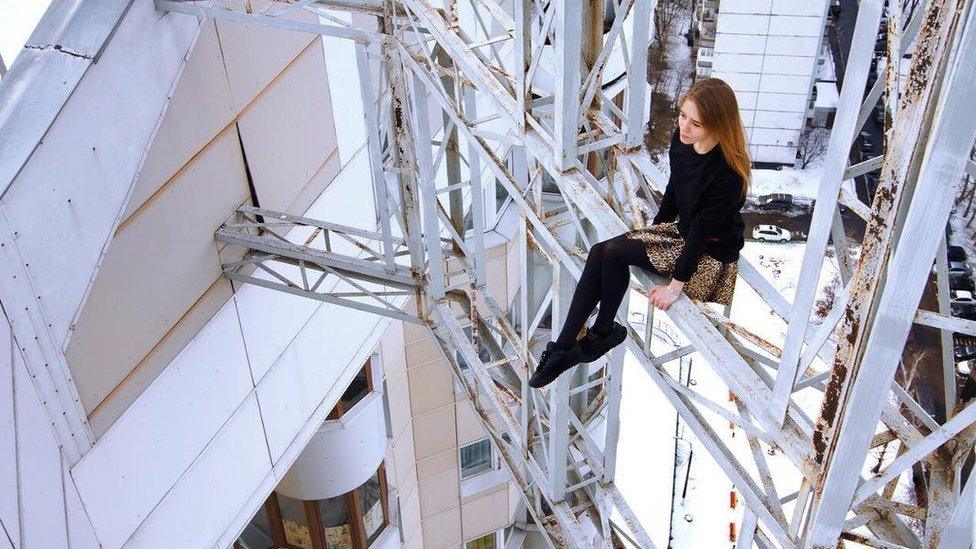
The daughter of a trapeze artist from Moscow's best known circus, Angela has more than 400,000 followers on her Instagram account. Travel firms, fashion brands and camera companies sponsor her dangerous adventures in Russia and beyond.
Like Alexander Chernikov, the 24-year-old art student was invited onto a TV show to talk about her stunts. But unlike him, she was applauded and received a bouquet of pink roses from the presenter.
In one of her most extreme videos, Angela and her boyfriend climb what is said to be the world's tallest crane in Tianjin, China.
She also climbs high buildings to perform eye-popping feats like a yoga backbend on a narrow ledge, or a ballerina's arabesque on a turret. Sometimes she is pictured smiling casually under a selfie-stick with the ground hundreds of metres below her.
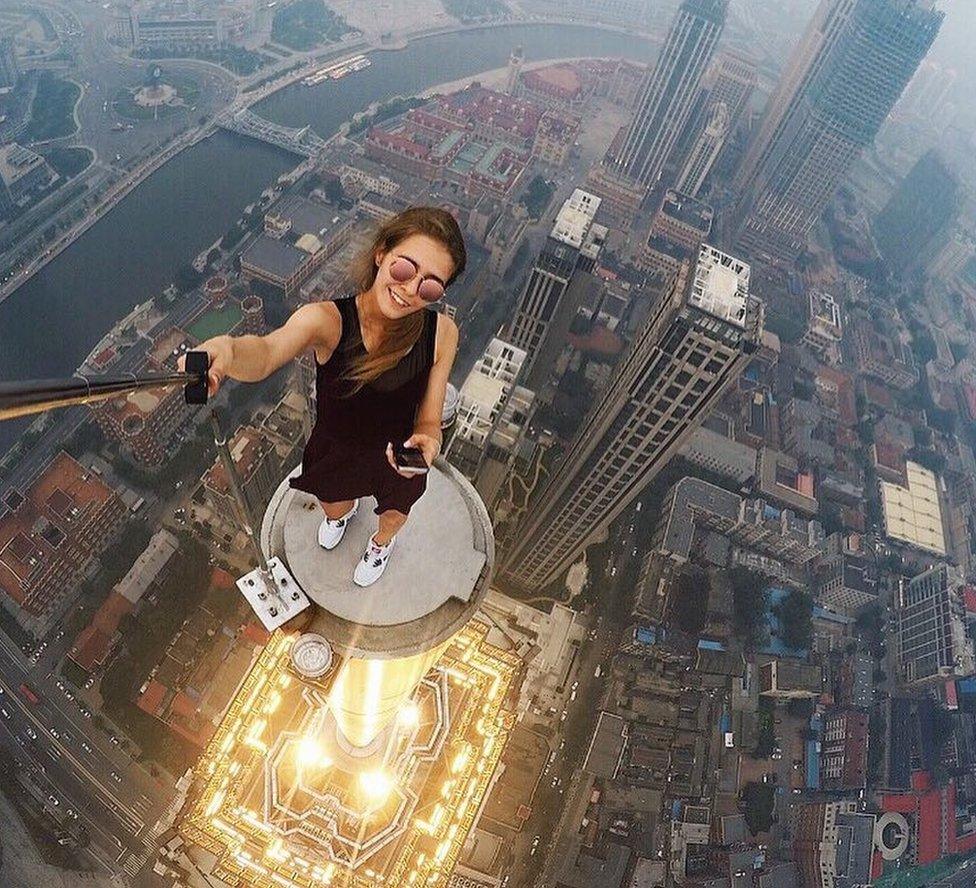
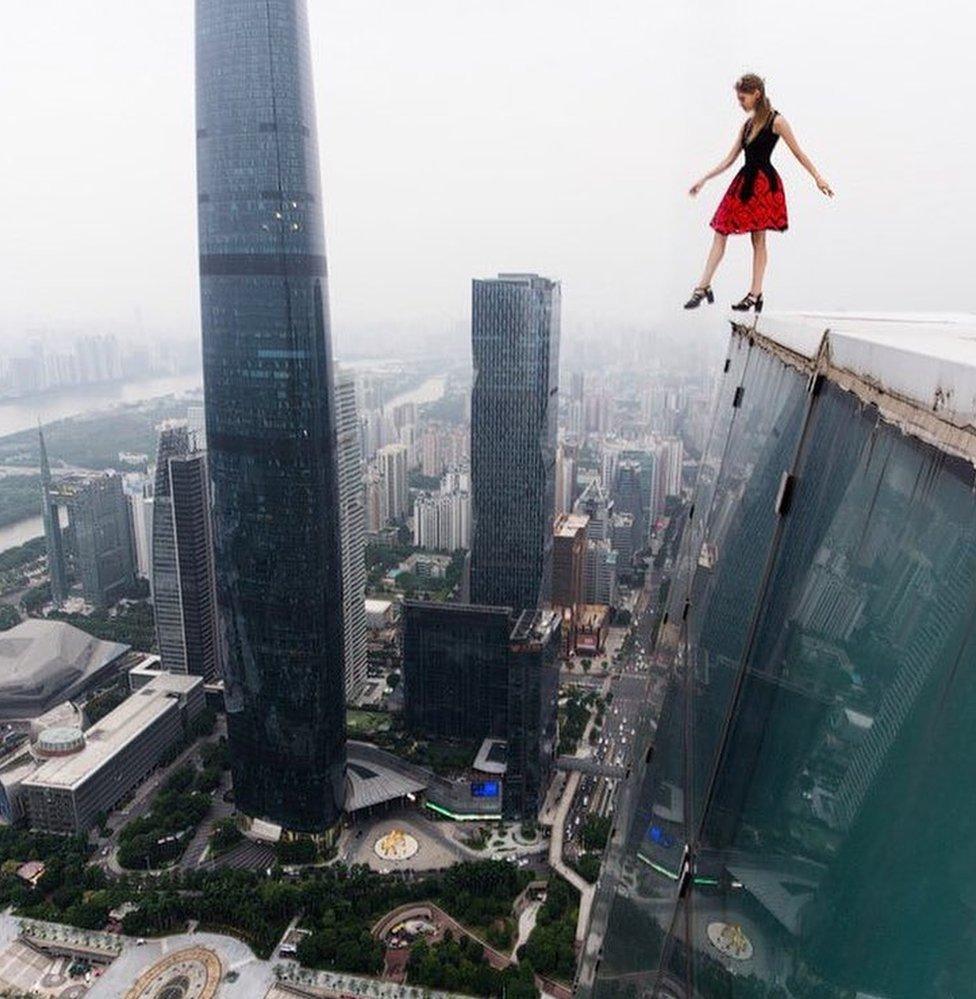
Angela says her grandmother was so upset when she first saw her photos, that she pretended they were Photoshopped.
For her, the presence of the camera is a key part of what she calls her art - although few artistic pursuits are as clearly dangerous.
"Sometimes I just climb up a building without a camera just to see a colourful sunrise or sunset," she says. "But if you are asking why I film myself, imagine an artist painting all alone in his studio - painting, painting, painting for five years until he is practically drowning in his own work. And he thinks who am I doing this for - is there any point in my work? We need an audience - that is just part of the human condition."
Blog by Lucy Ash, external
Another version of this story can be heard on BBC World Service Assignment in April.
Next story: Why transgender Africans turned against a famous feminist

A leading African writer has transfixed the internet with her comments on gender - but fellow Nigerians say they feel hurt. READ MORE
You can follow BBC Trending on Twitter @BBCtrending, external, and find us on Facebook, external. All our stories are at bbc.com/trending.
- Published20 August 2014
